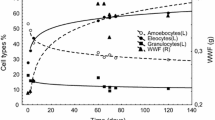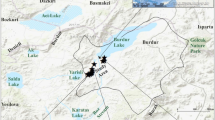Abstract
The surface water resource in arid land is on the verge of a crisis. The eroded soil deposited in the catchment area reduces the storage capacity of the reservoir. The countermeasures, such as dredging and flood water bypass, are suggested but they are quite costly especially for developing countries. The authors study the potential of exploitation of the sediment and its commercialization in order to reduce the financial burden of sediment dredging by using the income from sold the products. One of the possible aspects to utilize is the fulvic acid contained in the sediment for use as a functional food or medicine. In this study, fulvic acids were extracted from the sediment sampled from four reservoirs in Tunisia. Elemental analysis and FT-IR were performed in order to determine the chemical characteristics of the extracted fulvic acids. The fulvic acids from the reservoirs had a comparatively low biodegraded matter than the fulivic acids in other natural water environment due to the shorter time of humification. The functionalities of the extracted fulvic acids on human body were evaluated using in vitro bioassays. The effect on energy metabolism and anti-allergic potential of some of the fulvic acids were confirmed.







Similar content being viewed by others
References
Remini, B: La Sedimentation Des Barrages, Universite Saad Dahlab-Blida. (2006) (in French)
Claude, J., Chartier, R.: Mesure de E’envasement dans les retenues de six barrages en Tunisie Campagne de 1975. Cah. Orstom sér. Hydrol. 14(1), 3–35 (1977). in French
Ben Mammou, A., Louati, M.: Évolution temporelle de l’envasement des retenues de barrages de Tunisie. Rev. Sci. de l’Eau 20(2), 201–211 (2007). in French
Irie, M., Kawachi, A., Tarhouni, J., Ghrabi, A.: Development of sedimentation and characteristics of sediment on the reservoir in Tunisia. J. Jpn. Soc. Civ. Eng. Ser. B1 67(4), I163–I168 (2011)
Irie, M., Kashiwagi, K., Ujiie, K., Nsiri, I., Buguerra, S., Tarhouni, J.: Feasibility of exploitation of the sediment in the reservoirs for the sustainability of surface water resource in Tunisia. J. Jpn. Soc. Civ. Eng. Ser. G 68(6), II41–II46 (2012)
Mtibaa, S., Irie, M., Ksibi, M., Trabelsi, H., Hentati, O., Kallel, M., Isoda, H.: Soil amendment by sediment from water storage reservoir as a restoration technique in secondary treated wastewater irrigated area at El Hajeb region. J. Arid Land Stud. 22(1), 315–318 (2012). Accepted
Stevenson F.J.: Humic Substances in soil, sediment and water. In: Aiken GR, Mcknight DM, Wershaw RL, Maccarthy P(eds), pp. 13–52. Wiley, New York (1985)
Tachibana, Y., Hiribe, S., Tawa, R.: Studies of antioxidative activity of humic substances in peat (1). Trace Nutr. Res. 23, 104–108 (2004). in Japanese
van Rensburg, C.E.J., van Straten, A., Dekker, J.: An in vitro investigation of the antimicrobial activity of oxifulvic acid. J. Antimicrob. Chemmother. 46, 835–854 (2000)
van Rensburg, C.E.J., Malfeld, S.C.K., Dekker, J.: Topical application of Oxifulvic acid suppresses the cutaneous immune response in mice. J. Drug Develop. Res. 53, 29–32 (2001)
Motojima, H., Yamada, P., Han, J., Ozaki, M., Shigemori, H., Isoda, H.: Properties of fulvic acid extracted from excess sludge and its inhibiting effect on β-hexosaminidase release. Biosci. Biotechnol. Biochem. 73(10), 2210–2216 (2009)
Kawasaki, M., Toyoda, M., Teshima, R., Sawada, J., Hayashi, T., Arisawa, M., Shimizu, M., Morita, N., Inoue, S., Saito, Y.: J. Food Hyg. Soc. Jpn. 35, 496–503 (1994)
Nagao, M.: Hosyaseihaikibutsukenkyu 1–2, 231–242 (1995). in Japanese
Castagnoli, O., Mesmeci, L., Zavattiero, E., Chirico, M.: Water Air Soil Pollut. 53, 1–12 (1990)
Whitby, L.M., Schnitzer, M.: Humic and fulvic acids in sediment and soil of agricultural watersheds. Can. J. Soil Sci. 58, 167–178 (1978)
Moros, J., Hermelo, H.P., Pineiro, M.A., Barrera, B.P., Garrigues, S., Guardia, M.: Screening of humic and fulvic acids in estuarine sediments by near-infrared spectrometry. Anal. Bioanal. Chem. 392, 541–549 (2008). doi:10.1007/s00216-008-2279-2
Sardessai, S.: Characteristics of humic and fulvic acids in Arabian sea sediment. Indian J. Marine Sci. 24, 119–127 (1995)
Nriagu, O.J., Coker, D.R.: Trace metals in humic and fulvic acids from lake Ontario sediment. Env. Sci. Tech. 14(4), 443–446 (1980)
Giovanela, M., Parlanti, E., Soriano-Sierra, J.E., Soldi, S.M., Sierra, M.: Elemental composition, FT-IR spectra and thermal behaviour of sedimentary fulvic and humic acids from aquatic and terrestrial environments. Geochem. J. 38, 255–264 (2004)
Yamada, P., Isoda, H., Han, J., Talorete, T.P.N., Yamaguchi, T., Abe, Y.: Inhibitory effect of fulvic acid extracted from Canadian Sphagnum peat on chemical mediator release by RBL-2H3 and KU812 cells. Biosci. Biotechnol. Biochem. 71, 1294–1305 (2007). doi:10.1271/bbb.60702
Stevenson, F.J., Goh, K.M.: Infrared spectra of humic acids and related substances. Geochim. Cosmochim. Acta 35, 471–483 (1971)
Matthews, G.V.T.: The Ramsar Convention on Wetlands; Its History and Development, Luthi, Ramsar (ed.) Ramsar Convention Bureau, Gland, 122. (1993)
Acknowledgments
This research was partially supported by the Ministry of Education, Science, Sports and Culture, Grant-in-Aid for Scientific Research (B), 2010, 22404009. and JST/JICA, SATREPS.
Author information
Authors and Affiliations
Corresponding author
Rights and permissions
About this article
Cite this article
Irie, M., Han, J., Kawachi, A. et al. In Vitro Testing and Commercialization Potential of Extracted Fulvic Acid from Dredged Sediment from Arid Region Reservoirs. Waste Biomass Valor 5, 273–281 (2014). https://doi.org/10.1007/s12649-013-9234-y
Received:
Accepted:
Published:
Issue Date:
DOI: https://doi.org/10.1007/s12649-013-9234-y




